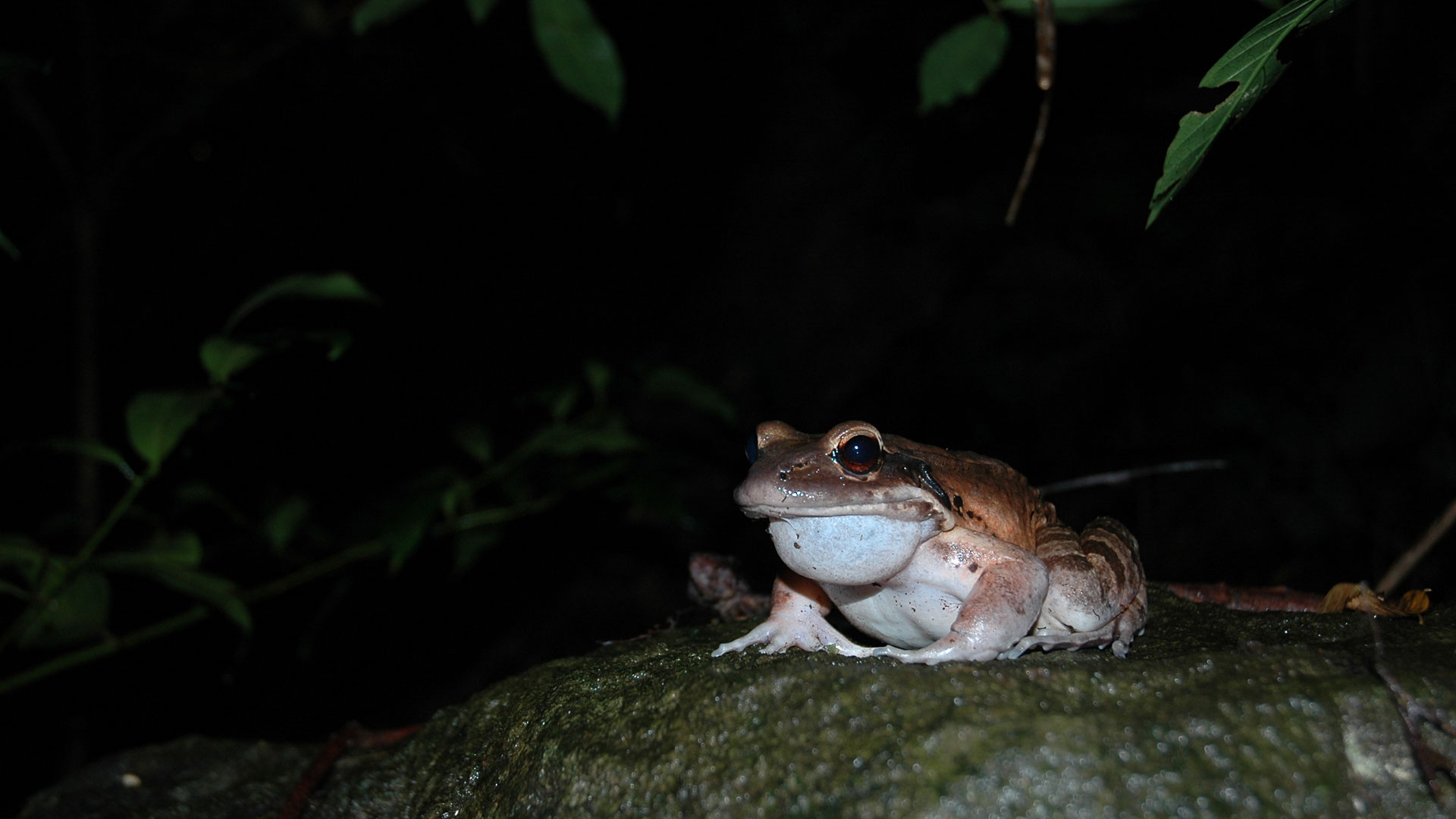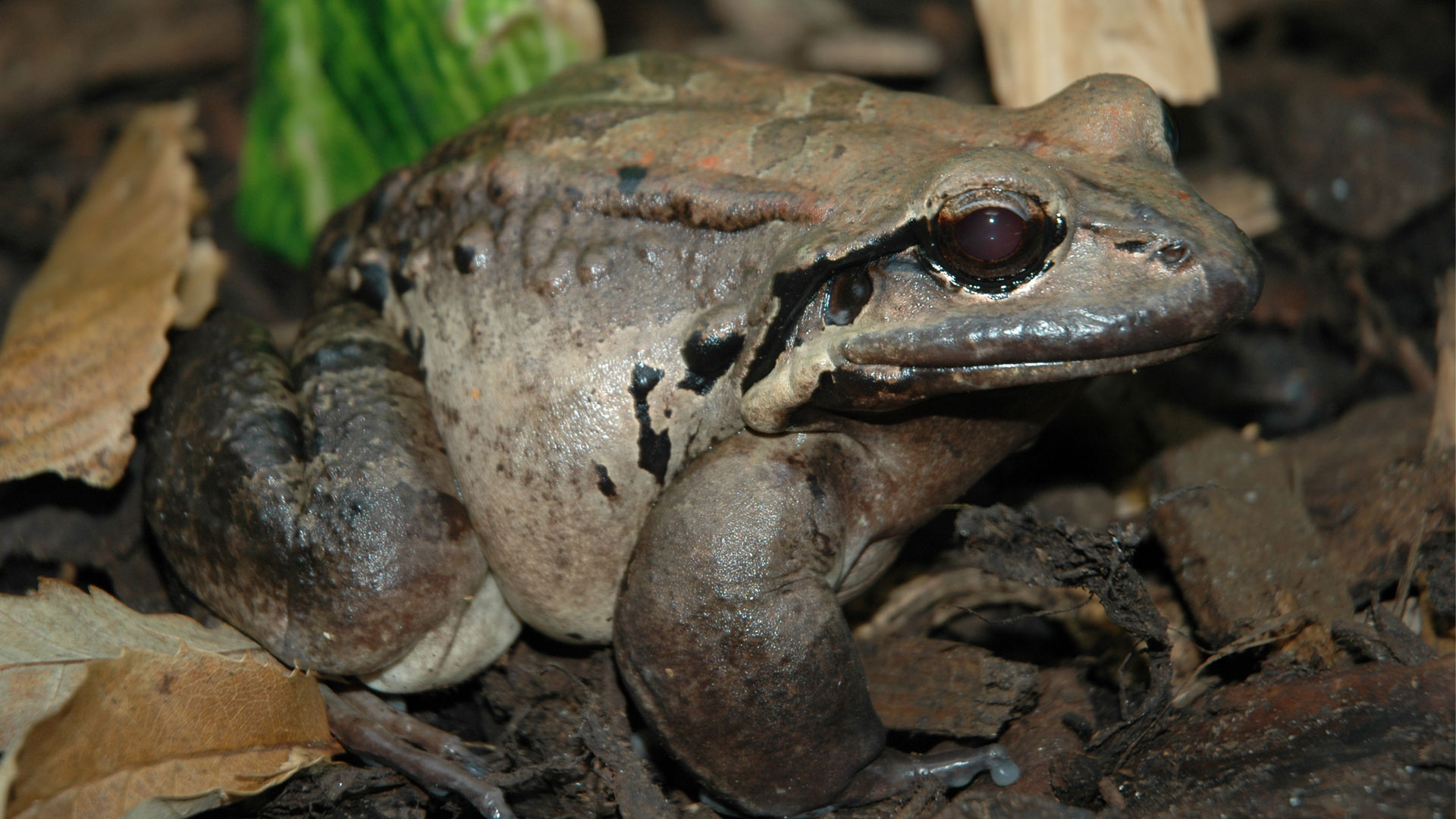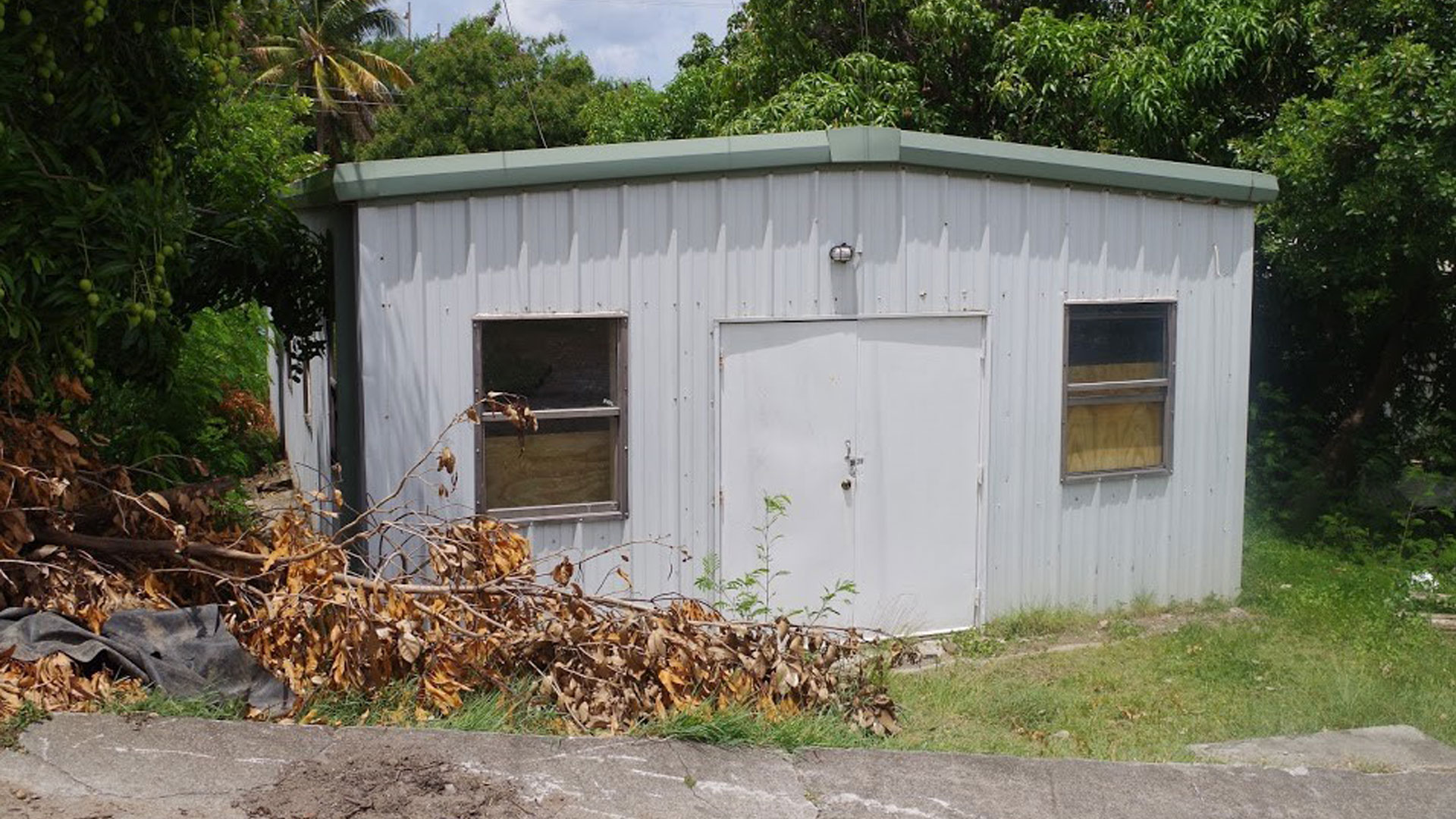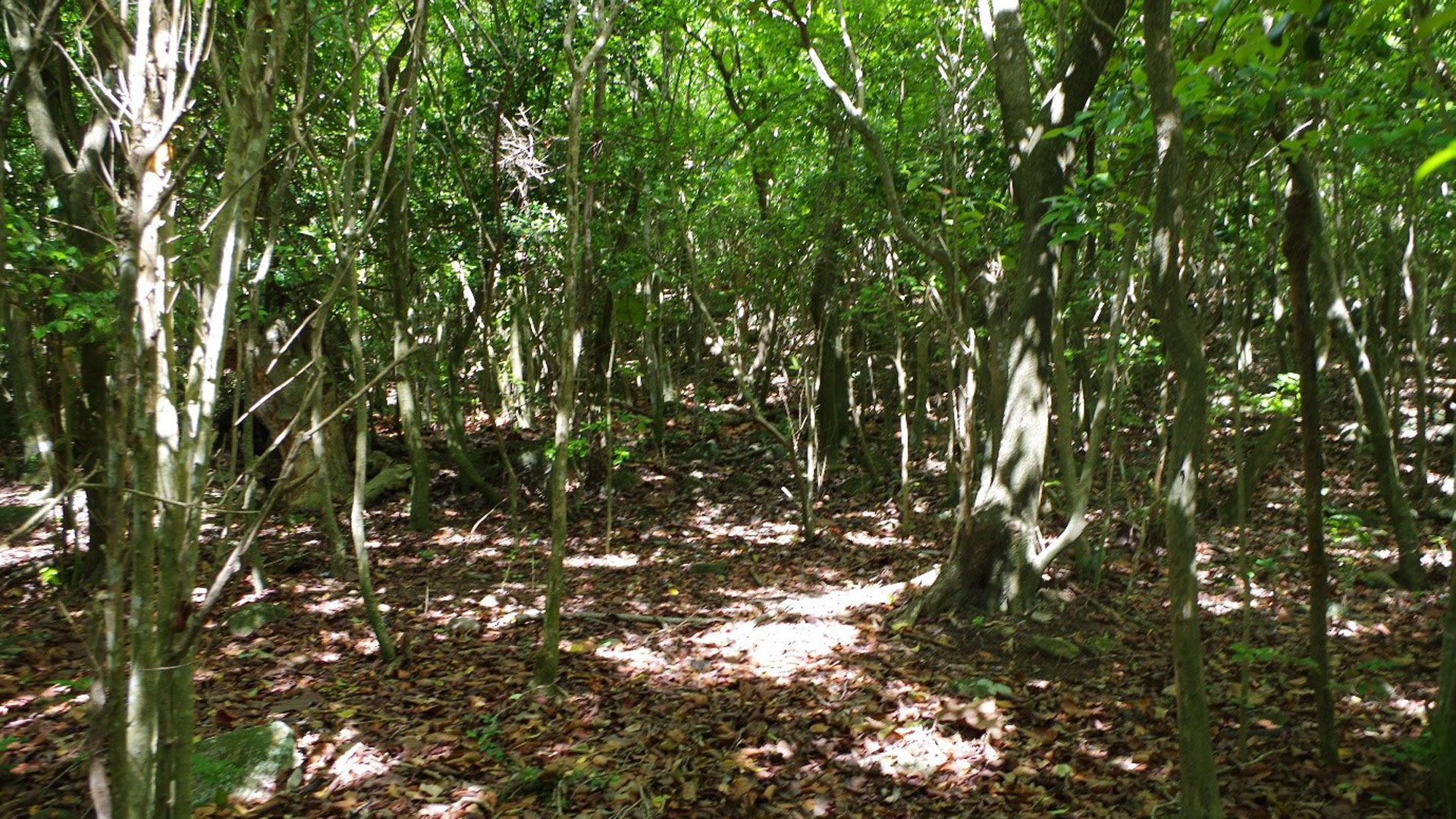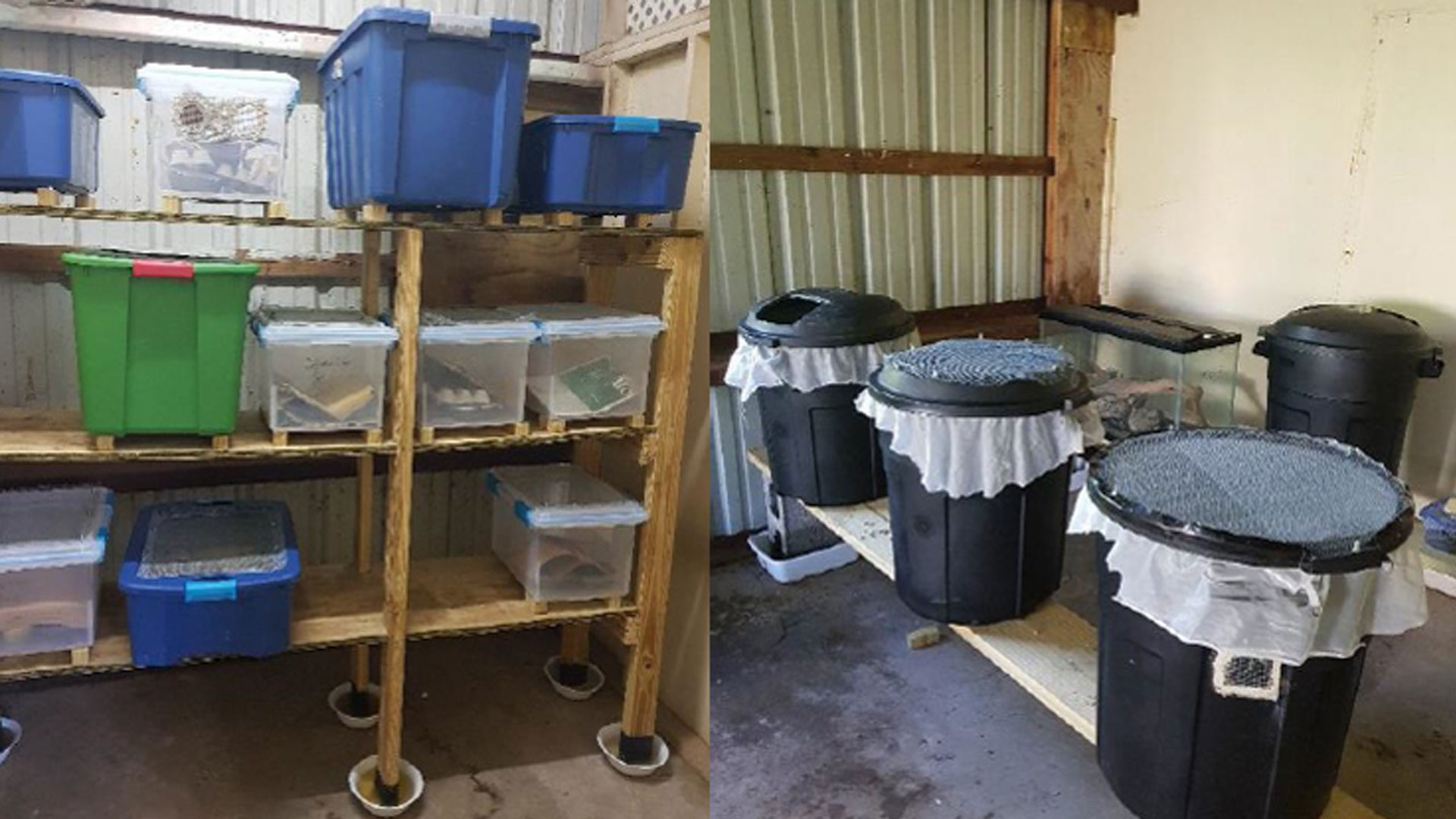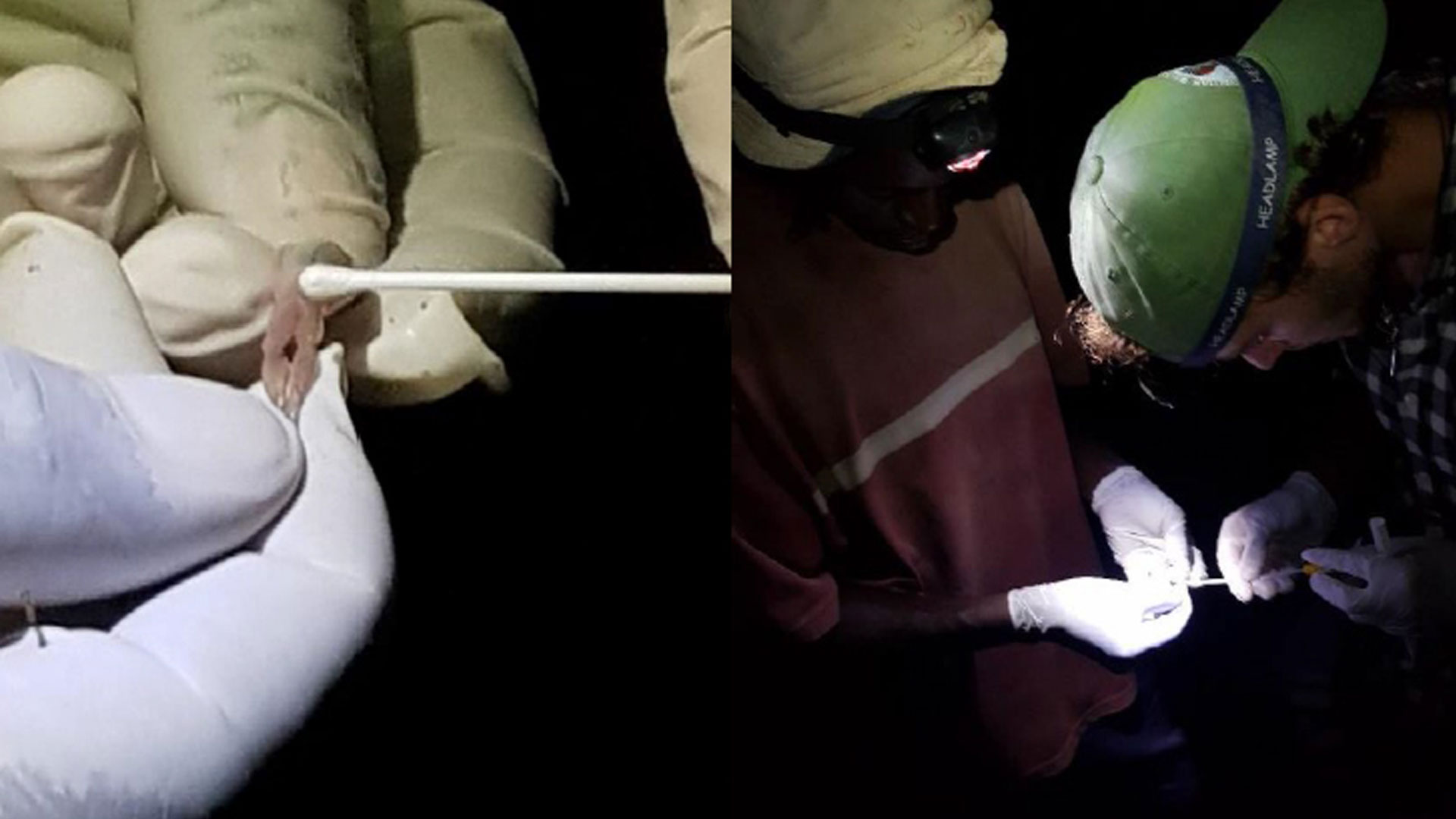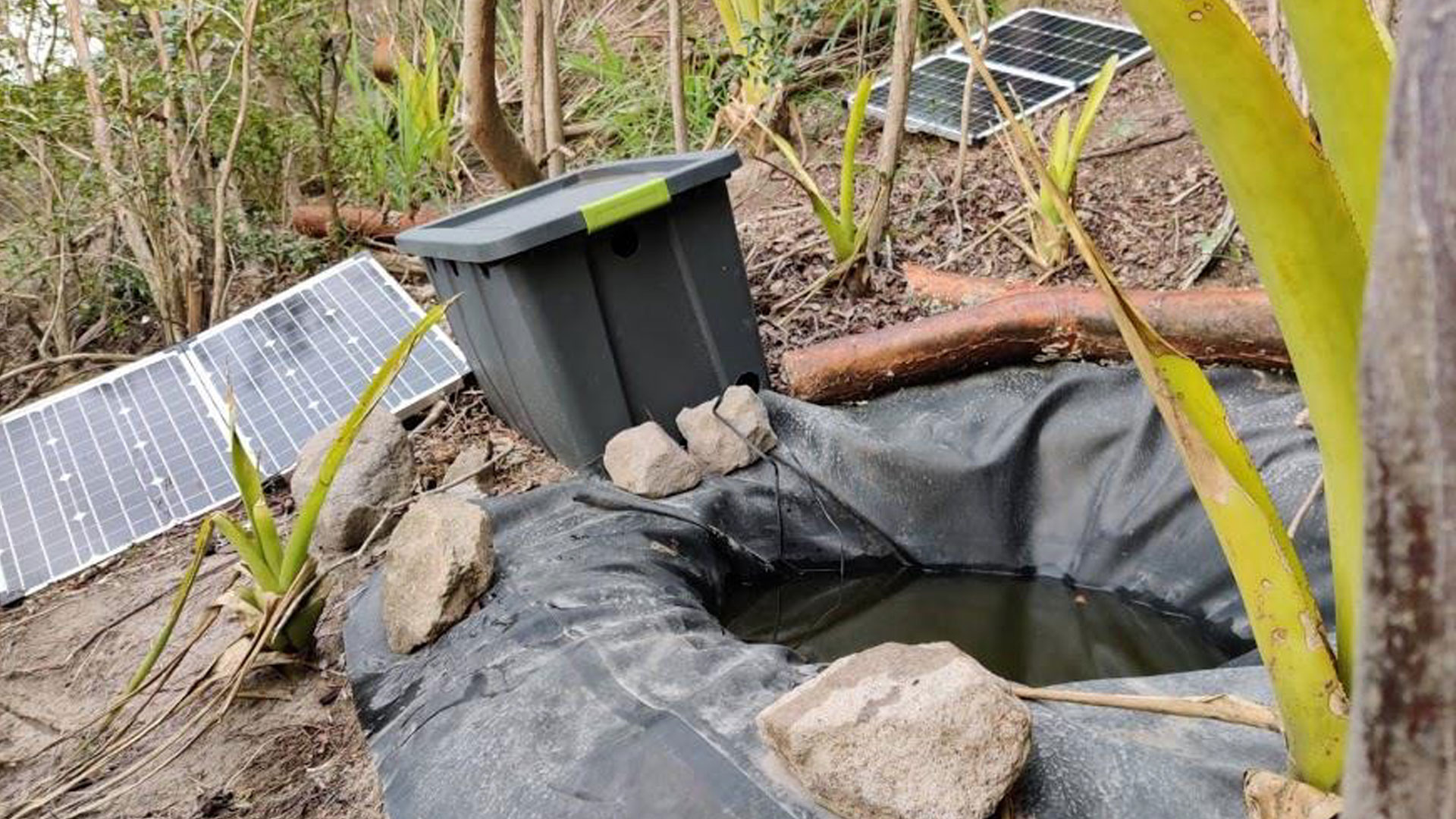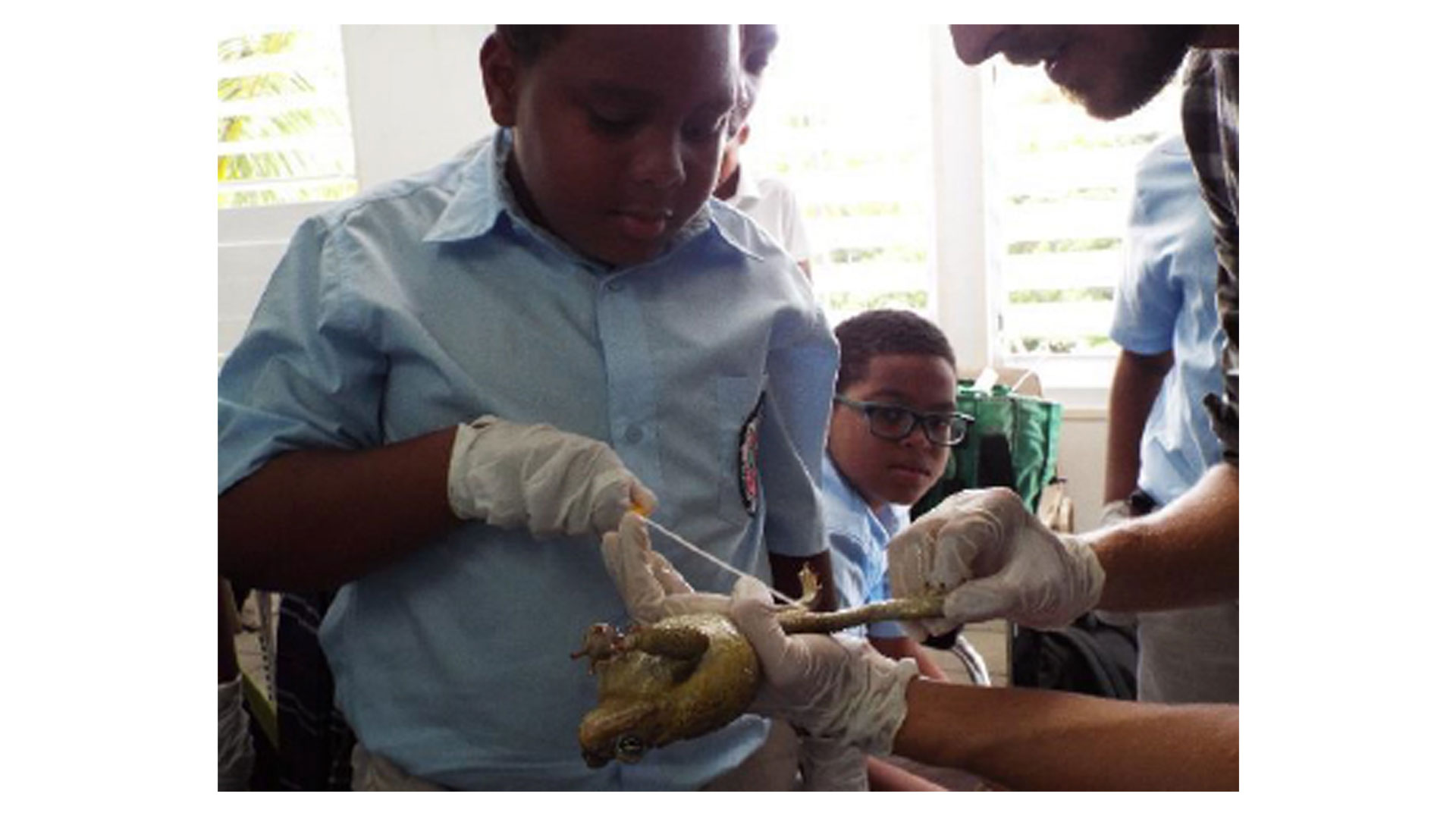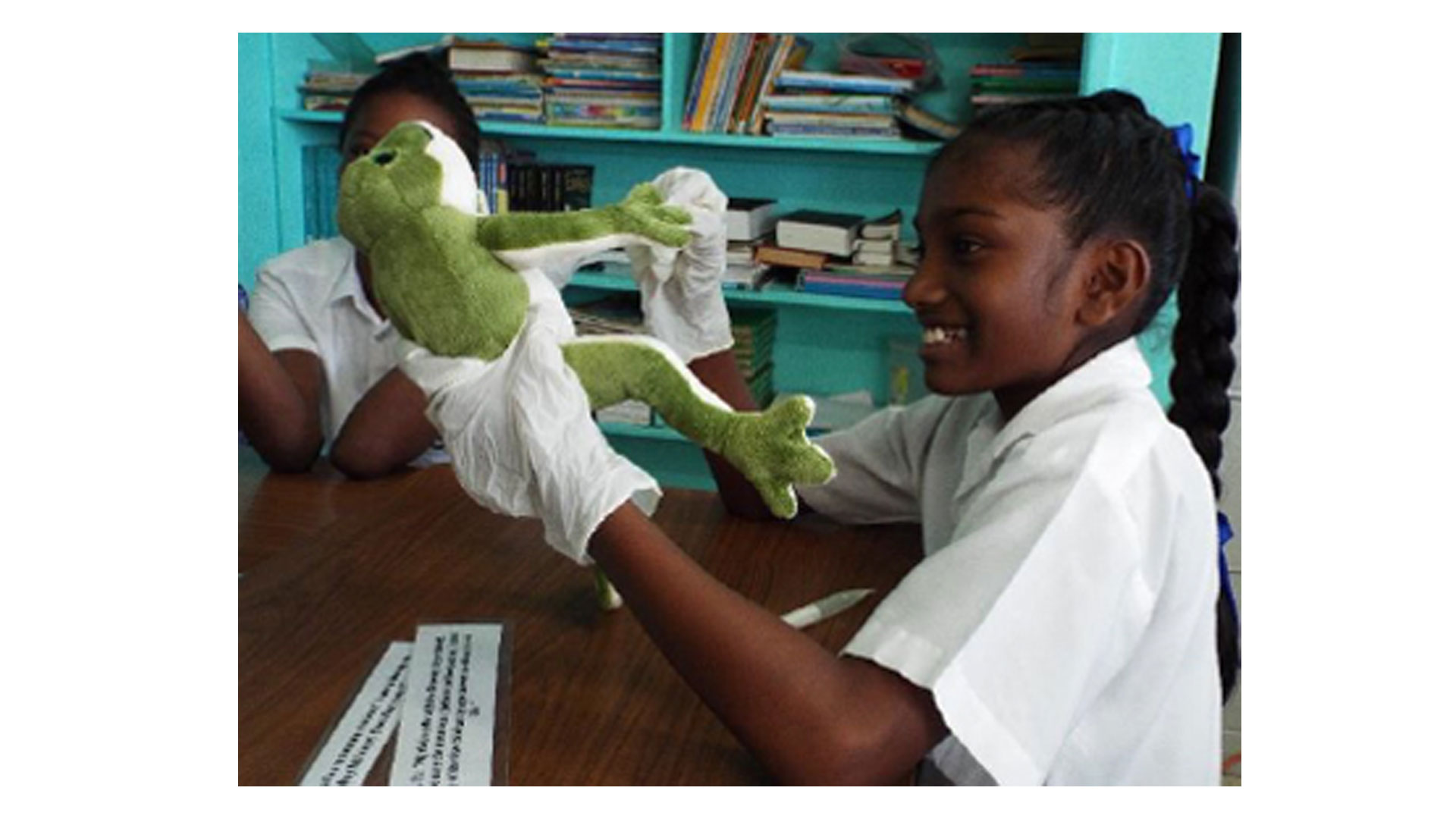Meet a very special frog population carrying hope for their species. Deep in the damp forests on the islands of Dominica and Montserrat, one of the world’s largest frog species is hanging on by a thread. The mountain chicken frog (you’ll never guess what it tastes like) has suffered from habitat loss, overhunting, and a far more insidious foe that threatens to tip them over the edge.
All across the world, we’re going through an amphibian apocalypse. Over 90 species are extinct already, wiped out by the chytrid fungus. “The organism/disease is often referred to as the worst ever wildlife disease threat to a taxonomic class ever recorded,” reports Richard Gibson, Auckland Zoo’s Head of Life Sciences. “Species are not equally susceptible, fortunately, so we will not lose all amphibians, but we may continue to lose additional sensitive species.” When the chytrid fungus arrived in Montserrat, the Mountain Chicken population collapsed, wiping out more than 80% of the population in less than a year.



